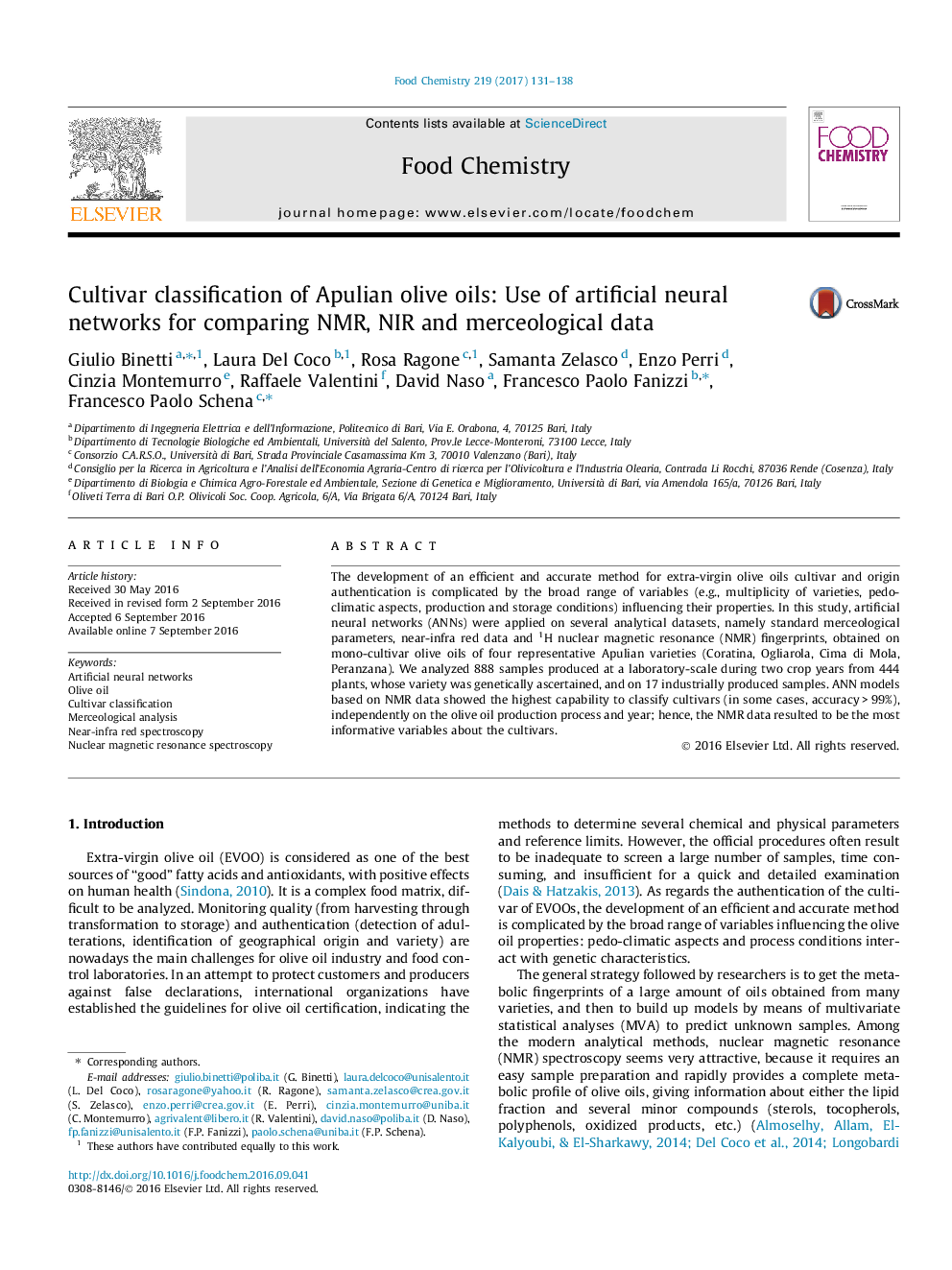| Article ID | Journal | Published Year | Pages | File Type |
|---|---|---|---|---|
| 5134132 | Food Chemistry | 2017 | 8 Pages |
â¢Cultivar discriminating ability of ANNs on Apulian monocultivar EVOOs was studied.â¢Merceological, NIR and 1H NMR data were used as ANNs training sets.â¢ANN models based on NMR data showed the highest accuracy in classifying cultivars.â¢The most information about cultivars was contained in very few NMR peaks.â¢Performance was not influence by the milling method nor the crop year.
The development of an efficient and accurate method for extra-virgin olive oils cultivar and origin authentication is complicated by the broad range of variables (e.g., multiplicity of varieties, pedo-climatic aspects, production and storage conditions) influencing their properties. In this study, artificial neural networks (ANNs) were applied on several analytical datasets, namely standard merceological parameters, near-infra red data and 1H nuclear magnetic resonance (NMR) fingerprints, obtained on mono-cultivar olive oils of four representative Apulian varieties (Coratina, Ogliarola, Cima di Mola, Peranzana). We analyzed 888 samples produced at a laboratory-scale during two crop years from 444 plants, whose variety was genetically ascertained, and on 17 industrially produced samples. ANN models based on NMR data showed the highest capability to classify cultivars (in some cases, accuracy > 99%), independently on the olive oil production process and year; hence, the NMR data resulted to be the most informative variables about the cultivars.
